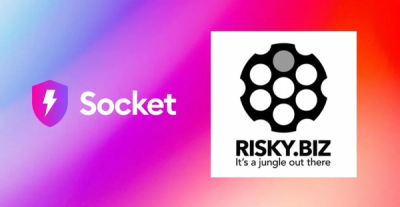
Security News
AGENTS.md Gains Traction as an Open Format for AI Coding Agents
AGENTS.md is a fast-growing open format giving AI coding agents a shared, predictable way to understand project setup, style, and workflows.
Lightweight Firebase/Supabase alternative built to run anywhere — incl. Next.js, React Router, Astro, Cloudflare, Bun, Node, AWS Lambda & more.

bknd simplifies app development by providing a fully functional backend for database management, authentication, media and workflows. Being lightweight and built on Web Standards, it can be deployed nearly anywhere, including running inside your framework of choice. No more deploying multiple separate services!
For documentation and examples, please visit https://docs.bknd.io.
[!WARNING] This project requires Node.js 22 or higher (because of
node:sqlite).Please keep in mind that bknd is still under active development and therefore full backward compatibility is not guaranteed before reaching v1.0.0.



The size on npm is misleading, as the bknd package includes the backend, the ui components as well as the whole backend bundled into the cli including static assets.
Depending on what you use, the size can be higher as additional dependencies are getting pulled in. The minimal size of a full bknd app as an API is around 300 kB gzipped (e.g. deployed as Cloudflare Worker).
Creating digital products always requires developing both the backend (the logic) and the frontend (the appearance). Building a backend from scratch demands deep knowledge in areas such as authentication and database management. Using a backend framework can speed up initial development, but it still requires ongoing effort to work within its constraints (e.g., "how to do X with Y?"), which can quickly slow you down. Choosing a backend system is a tough decision, as you might not be aware of its limitations until you encounter them.
The solution: A backend system that only assumes and implements primitive details, integrates into multiple environments, and adheres to industry standards.
The package is mainly split into 4 parts, each serving a specific purpose:
| Import | Purpose |
|---|---|
bkndbknd/adapter/* | Backend including APIs and adapters |
bknd/ui | Admin UI components for react frameworks |
bknd/client | TypeScript SDK and React hooks for the API endpoints |
bknd/elements | React components for authentication and media |
bknd)Serve the backend as an API for any JS runtime or framework. The latter is especially handy, as it allows you to deploy your frontend and backend bundled together. Furthermore it allows adding additional logic in a way you're already familar with. Just add another route and you're good to go.
Here is an example of serving the API using node:
import { serve } from "bknd/adapter/node"
serve();
bknd/ui)The admin UI allows to manage your data including full configuration of your backend using a graphical user interface. Using vite, your admin route looks like this:
import { Admin } from "bknd/ui"
import "bknd/dist/styles.css";
export default function AdminPage() {
return <Admin />
}
bknd/client)If you're not using a JavaScript environment, you can still access any endpoint using the REST API:
curl -XGET <your-endpoint>/api/data/entity/<entity>
{
"data": [
{ "id": 1, ... },
{ "id": 2, ... }
],
"meta": { /* ... */ }
}
In a JavaScript environment, you can use the TypeScript SDK with type-safety. The above example would look like this:
import { Api } from "bknd/client";
const api = new Api({ host: "<endpoint>" });
const { data } = await api.data.readMany("<entity>");
If you're using React, there are 2 hooks exposed (useApi, useEntity), as well as an swr wrapper around each (useApiQuery, useEntityQuery). The swr wrapped hooks automatically handled query invalidation:
import { useState } from "react";
import { useEntityQuery } from "bknd/client";
export default function App() {
const { data } = useEntityQuery("todos");
return <ul>
{data?.map(todo => (
<li key={todo.id}>{todo.name}</li>
))}
</ul>
}
bknd/elements)You don't have to figure out API details to include media uploads to your app. For an user avatar upload, this is all you need:
import { Media } from "bknd/elements"
import "bknd/dist/main.css"
export function UserAvatar() {
return <Media.Dropzone
entity={{ name: "users", id: 1, field: "avatar" }}
maxItems={1}
overwrite
/>
}
The import path also exports components for login and registration forms which are automatically pointed to the bknd defaults.
To quickly spin up an instance, run:
npx bknd run
npm install bknd
FAQs
Lightweight Firebase/Supabase alternative built to run anywhere — incl. Next.js, React Router, Astro, Cloudflare, Bun, Node, AWS Lambda & more.
The npm package bknd receives a total of 1,519 weekly downloads. As such, bknd popularity was classified as popular.
We found that bknd demonstrated a healthy version release cadence and project activity because the last version was released less than a year ago. It has 1 open source maintainer collaborating on the project.
Did you know?

Socket for GitHub automatically highlights issues in each pull request and monitors the health of all your open source dependencies. Discover the contents of your packages and block harmful activity before you install or update your dependencies.

Security News
AGENTS.md is a fast-growing open format giving AI coding agents a shared, predictable way to understand project setup, style, and workflows.

Security News
/Research
Malicious npm package impersonates Nodemailer and drains wallets by hijacking crypto transactions across multiple blockchains.

Security News
This episode explores the hard problem of reachability analysis, from static analysis limits to handling dynamic languages and massive dependency trees.